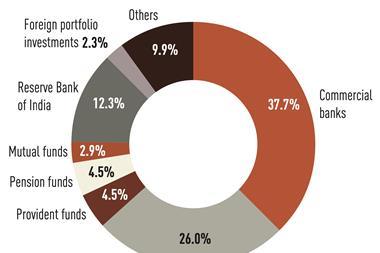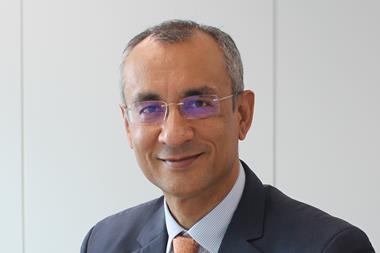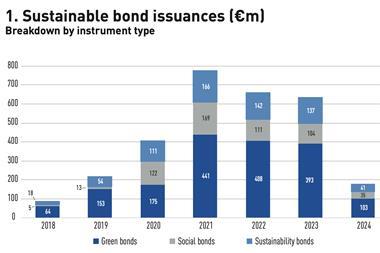Investment in solar, wind and other forms of alternative energy has ebbed and flowed over the years, buffeted by the global financial crisis, varying government support and rapidly evolving technology. Peter Dickson, technical director of the €437m ($582m) Glennmont Partners fund, which invests directly in energy infrastructure, says the opportunities remain attractive due to continued growth in energy demand and steadily rising prices for traditional fuels, and the varying maturities of global markets means that there are different levels of risk available.
“Europe is about moderate returns and stability and long term yields,” Dickson says. “Asia is a little bit more like a private equity-style investment. You’re seeing a bit more in the returns, a little bit more volatility in the yield and possibly an uptick on exit from investments.”
“The difference in Asia is that many of the regulatory regimes that promote and support the development are not as mature or as well developed, as robust, as you’d see in Europe.”
Glennmont Partners was formerly BNP Paribas Clean Energy Partners, and spun off from BNP Paribas Investment Partners in January to become an independent firm owned by its management team. Its portfolio includes wind, solar and biomass projects in France, Italy, Ireland, Portugal and the UK.
In June a set of United Nations reports said global investment in renewables fell to $244bn in 2012 from $279bn in 2011, with some of the decline due to drops in costs for solar and wind technologies. The reports said that investment in wind, solar and other renewable energy projects in developing countries is slowly gaining ground on the lead held by industrialized nations.
Investment in the emerging markets totaled $112bn in 2012, including $67bn in China alone. The biggest regional surge in investment was in the Middle East and Africa while the US, which led the world in alternative investments in 2011, fell behind China, with investment dipping 34% to $36bn. This compared to $132bn in expenditures in the developed world, with the gap in investments between developed and emerging markets shrinking to 18%. Two-thirds of the 138 nations that now have clean-energy targets are in the developing world.
Spanish lessons Many investors considering the alternative energy space may have had their confidence rattled by recent developments in Spain. The country became a European poster child for expanding alternative energy generation to account for more than half of all electricity generated and met difficult technical challenge of successfully integrating those varied sources of energy into the national grid.
However, the country was over aggressive in subsidising renewables while keeping consumer rates too low, creating a sizable gap between the sum paid by utilities to power generators and the amount utilities have recouped from their customers. Hopes were that economic growth would allow the costs to be recoupled in a few years’ time. Instead, Spain and the rest of Europe crashed, and the deficit has spiraled, prompting the government to backtrack on promised subsidies.
A sizable amount of political will is needed to foster a national alternative investment industry, and Spain has shown that when the political will dies the subsidies may dry up. This creates an unpredictable risk for investors.
Dickson says he does not expect similar situations in other countries, but that Spain an important lesson for other governments working to build up an alternative energy industry.
“For Spain it was very unfortunate that the government decided to take retroactive action, because it has meant that investors such as ourselves are very, very reluctant to look at anything in Spain,” he says. “Any country that considers removing a tariff that has been in place, and attracted investment to the country based on the strength of those tariffs, risks portraying themselves as a very poor investment case.”
Dickson adds the longer-term concern over rising energy costs are still supportive for alternative energy investments, particularly in Europe. “I think there is a great deal of optimism for this type of investment in Europe,” Dickson said. “If one is going to protect economies from rising fuel prices in general, then this is short term medicine in order to maintain the cost of energy in the future.”
“The alternative energy space in Europe is all about energy security,” he says. “Climate change, carbon mitigation and all that is very important, but Europe desperately needs investment in the energy space to diversify away from gas fired generation, where we are very exposed to volatile international gas markets, and we need to replace obsolete coal fired capacity. Alternative energy in this context is the only indigenous form of energy we have in Europe, and therefore it’s a hedge against these volatile markets.”
The solar industry has gone through its own exceptional volatility due to initial high optimism, then rapid technological changes, and now falling production costs and industry consolidation. however, Dickson says the upheaval, and the lower reliance on subsidies due to falling production costs, has created new opportunities for nimble investors. “Maybe we’re seeing the end of the boom years, and hopefully we’re seeing tapering down to what is a more sustainable and steady growth.”
Dickson warns investors to pause before jumping in, as the industry is very technical by nature, with constantly evolving technology and large assets that need expert management.
“Big institutions should be wary about jumping in. It’s a lot more specialist than it appears,” says Dickson, who came to investing from an engineering background. “I don’t think it will ever become part of a general asset manager portfolio without a dedicated specialist team in this area.”












No comments yet